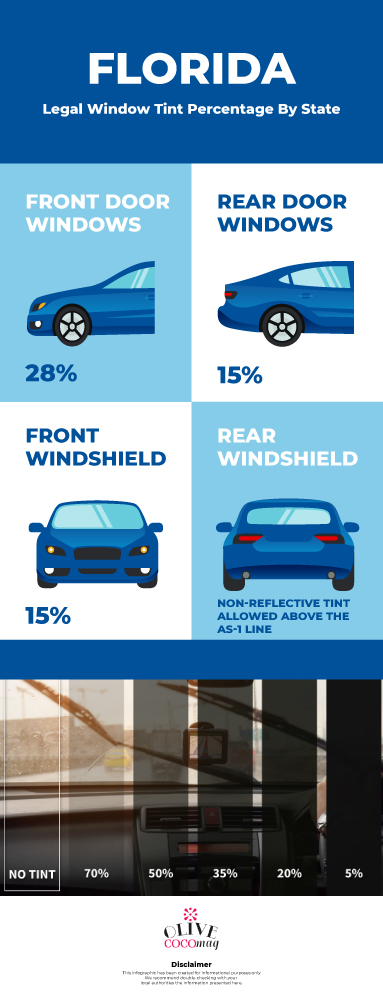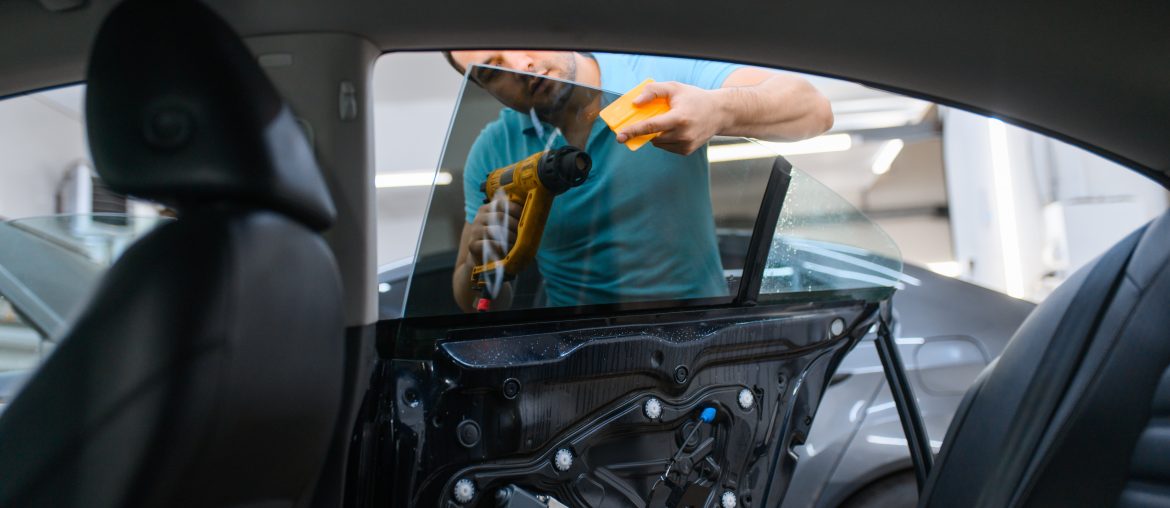Florida window tint laws were enacted in 1991. The main intention of these laws is to safeguard public safety by ensuring proper visibility of the drivers. Since some towns and counties have special rules and regulations related to this, it is recommended to refer to your local office of the Department of Motor Vehicles for better clarification. The following are the legal restrictions for vehicle window tinting.
Table of Contents
Florida window tint law

Window Tint Darkness in Florida
Tint Darkness for Sedans:
- Windshield: Non-reflective tint is allowed above the manufacturer’s AS-1 line.
- Front Side windows: Must allow more than 28% of light in.
- Back Side windows: Must allow more than 15% of light in.
- Rear Window: Must allow more than 15% of light in.
Tint Darkness for SUV and Vans:
- Windshield: Non-reflective tint is allowed above the manufacturer’s AS-1 line.
- Front Side windows: Must allow more than 28% of light in.
- Back Side windows: Must allow more than 6% of light in.
- Rear Window: Must allow more than 6% of light in.
Window Tint Reflection in Florida
Tint reflection for sedans, SUVs, and vans:
- Front Side windows: Must not be more than 25% reflective.
- Back Side windows: Must not be more than 35% reflective.
Other Rules and Regulations in Florida Tint Laws:
The following are some other legal considerations that need to be followed in the state of Florida.
Side Mirrors
If the back windows are tinted, then dual side mirrors are required.
Restricted Colors
All colors are restricted as Florida car window tint law does not permit any colored tint. However, there are many different shades of window tint depending on the Visible Light Transmission factor. For more details, refer to Window Tinting Shades Chart.
Certificates and Stickers
It is not necessary for film manufacturers to certify the film sold in this state. However, according to Florida tint laws, a sticker used to identify legal tinting is required to be pasted on the inside of the driver’s side door jamb.
Medical Exceptions
Medical exemptions for special tint are allowed by Florida car window tint law. People who have special photosensitive conditions can request a medical exemption. This privilege is non-transferable and the details of that person’s vehicle need to be submitted.
However, it’s always better to use a proper window film that blocks away harmful radiation from entering your vehicle. You can learn more about this from UV Blocking Window Film.
If you are interested in selecting the best type of window film, you can compare the two terminal end technologies from Regular vs Ceramic Window Tint.
Cost of a Window Tint Ticket in Florida
If you get caught for violating the window tint laws in Florida, then you will get a fine of around $100. But, an assessment would not be done on your license. However, the police officers can even write tickets up to one per window. So, make sure not to go beyond the legal limitations of window tint, as you don’t want to get in trouble. So if you have already installed an illegal window film, it would be better to remove it by learning How to Remove Window Tint.
State of Florida Information
The state of Florida is situated in the southeast of the United States. It has borders of the Gulf of Mexico from the west and Alabama and Georgia from the north. The Atlantic Ocean is from the east and the Straits of Florida on the south. Florida is the 4th most populous state and 22nd most extensive. It is also the 8th most densely populated state. Its capital is Tallahassee. The total population is over 19 million and the land area is 65,755 square miles (170,304 square kilometers).
Visit Window Tint Laws in the U.S. by State for details on legal limitations on vehicle window tinting in each state.
Keep in mind that Delaware tint laws can change daily and may be interpreted differently in your city or county. To be sure, we recommend double-checking our information with your local DMV or Law Enforcement Authorities. Furthermore please let us know if there are any changes to make.







